Darmstadt – Waldkunst
The first sculptur is named “Time Bomb” from Ernest Daetwyler and is placed in the forest near the US army base in Darmstadt. The whole work is built from wooden elements found around Darmstadt: chairs, beds or tables… Everything returned to the point of their origin.
The second installation is 30qm big and is named “A little spider can build much more complex things” from Elena Redaelli.
Berlin
Berlin is with a population of 3.45 million people the largest city of Germany and is the residence for over 190 nations. The city is the home of renowned universities and research institutes. Furthermore, Berlin shelters great culture, like museums, orchestra and sporting events. The city is famous for the diverse architecture, nightlife and contemporary arts. Its unique and urban settings,plus historical legacy have made it a popular location for international film productions.
Need a bike?
The bicycle sharing system makes numbers of bicycles available as a mobility service in different german cities.
Berlin – Potsdamer Platz
The Potsdamer Platz is a public square and traffic intersection in the centre of Berlin, Germany and the history can be tracked back to the year 1685.
In 1924 one of the first traffic lights in Continental Europe were built at Potsdamer Platz in an attempt to control the sheer volume of traffic passing through. More than 100.000 people and more than 60.000 cars, horse-drawn vehicles, handcarts and bycicles passed the place daily.
During World War II almost all of the buildings around Potsdamer Platz were turned to rubble by air raids and heavy artillery bombardment, but commercial life reappeared in the ruins around Potsdamer Platz within just a few weeks of war’s end.
1961, the construction of the Berliner Wall found the Potsdamer Platz physically divided in two peaces and became totally desolate. Only two buildings in the immediate vicinity of Potsdamer Platz still stood in the east part of Berlin. Below ground, the S-Bahn line remained open, without stopping at Potsdamer Platz. Therefore, the trains briefly passed through East German territory en route from one part of West Berlin to another and the S-Bahn station became the most infamous of several Geisterbahnhöfe (ghost stations).
After the opening of the Berliner Wall in 1989, Potsdamer Platz was one of the first places to cross the border between East and West Berlin. Nowadays, the square became the focus of attention again and became the key area where the city had an opportunity to express itself.
Wartburg
The Wartburg is situated near Eisenach (Thuringia) and was founded in 1068 by the count of Schauenburg. In 1207 the castle became the venue of the Sängerkrieg (Minstrels’ Contest) in which Minnesänger (Walther von der Vogelweide or Wolfram von Eschenbach) took part and was treated with poetic licence in Richard Wagner’s opera Tannhäuser.
From May 1521 until March 1522, Martin Luther stayed at the castle after his excommunication by Pope Leo X and translated the New Testament into German, the first translation into a modern language.
In 1817, about 450 students came together and called for German unity. This and similar events at Wartburg during the Revolutions of 1848 are considered seminal moments in the movement for German unification.
The Landgrafenhaus (romanesque palace) is the oldest building and contains the Sängersaal (Hall of the Minstrels), which is the setting for Richard Wagners Tannhäuser.
Künstlerkolonie, Darmstadt
These photos were taken in Darmstadt (Hesse), Germany.
The artists’ colony “Mathildenhöhe” was founded in 1899 by Ernest Ludwig, Grand Duke of Hesse and the first exhibition of the artists’ colony took place in 1901. Ernest Ludwig motto was: “My Hesse should flourish, and the art in Hesse too” and he brought together several artists of the Art Nouveau (Jugendstil) in Darmstadt: Peter Behrens, Hans Christiansen, Ludwig Habich and Joseph Maria Olbrich.
Frankenstein Castle, Germany
The castle Frankenstein is situated about 5 km south of Darmstadt (Hesse) and was built in the year 1250. From the year 1363, the castle was splitted into two parts and owned by two different families of the Lords and knights of Frankenstein. During the 15th century the castle was “modernized” and expanded. In the 18th century the castle was falling into ruins and the two remaining towers are the historically inaccurate restorations from the 19th century.
The influence of the castle on the work of Mary Shelley (Gothic novel “Frankenstein”) aren’t grounded in facts, because she never visited the castle during her journey on the river Rhine.
Nowadays, American soldiers stationed in Darmstadt founded an annual Halloween festival at the castle. This event became one of the biggest Halloween festivals in Europe.
Kaisertempel, Eppstein
The pictures were taken in Eppstein (Hesse), Germany. The picturesque city lies west of Frankfurt am Main and is at the edge of the Taunus mountains.
The Kaisertempel was built in 1894 as a memorial to commemorate the Prussian victory in the Franco-Prussian War (1870/71). This victory unified the German Empire under King Wilhelm I of Prussia. From the area, you have a wonderful view of Eppstein as far as Bremthal.
Eppstein Castle (Hesse), Germany
The pictures were taken in my hometown Eppstein. Eppstein is a town in Hesse (Germany), lies west of Frankfurt am Main and is at the edge of the Taunus mountains.
The ruins of the Eppstein castle were mentionend as “Ebbensten” in the year 1122 and were the home of the Lords of Eppstein, who ruled the territories of the Rhine Main area. The castle includes a museum with an old baroque altar and some books written by early travel writers who refer to Eppstein.
Now, the legend about the castle: The strong and handsome knight Eppo built the castle Eppstein and rescued the beautiful damsel Bertha from Bremthal from a giant. He slung the giant into a valley to death and took one of his ribs. You can see the rib above the castle gate (but it’s from a whale and not from a giant…)
